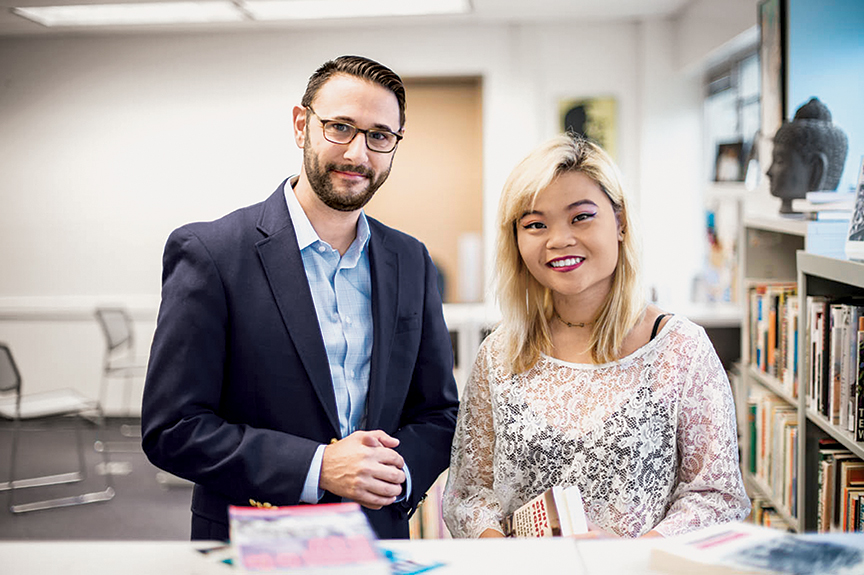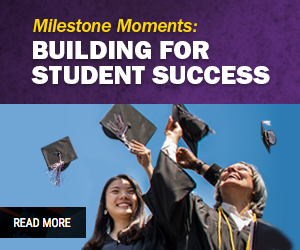New Center for Justice Supports Student Activism

Professor Vincent Intondi and Patty Pablo ’18 visit the new Center for Justice.
When Patty Pablo ’18 went to bed on August 13—after the nation spent the weekend watching white supremacists trudge through Charlottesville bearing torches and messages of bigotry and hate—only four people had signed up to join the protest event she advertised on Facebook. She assumed only a handful of people would show up the next day. They would make some signs, raise their voices to oppose white supremacy, and go home. Instead, Pablo awoke to more than 2,000 people, many who hailed from far beyond the Montgomery College community, expressing interest in her event. In the end, more than 500 people turned out on August 14 to march in Washington, from the White House to Trump Hotel to Judiciary Square.
“I didn’t expect any of it,” says Pablo, 20, of the crowd joining her at Lafayette Square that Monday afternoon. “We’re not a real organization. We’re just these two kids who wanted to do something.”
Pablo and a friend, Olivia Mouton ’19, got the idea to start the protest from Dr. Vincent Intondi, associate professor of history. Distraught after watching the events in Charlottesville, they reached out to Intondi for guidance. They were waiting for him to tell them how to get involved in something.
“Why are you waiting?” Intondi asked them. “Go out and organize your own event.”
Pablo, a theatre major from the Philippines who attended high school in Montgomery County, had been active on social media, interested in social justice organizing, and plugged in to the larger Takoma Park community.
“I always wanted to do something this big,” she says, “but I didn’t think I would do it this young.”
She will have ample space and support at the College to continue her activist efforts: the nascent Institute for Race, Justice, and Community Engagement on the Takoma Park/Silver Spring Campus. The center opens officially in February, realizing a dream of a dedicated place devoted to social justice issues and support for students from underrepresented and marginalized groups that Intondi has nurtured since he arrived on campus in 2013. “Faculty and administrators had always been supportive of the idea,” he says, “but nobody knew exactly what this was.”
The 2016 election—and the ensuing sharp divide in the country—hardened Intondi’s resolve.
“I had so many students after the election shaking—and in tears. Students who were so scared of what was to come,” says Intondi. “I wanted a space where they could vent it out, talk amongst each other, and we could be together.”
Intondi soon got the green light for the center, consisting of three rooms on campus: one for research, academic advising, and meeting; one for speakers and movies; and one for a food and clothing pantry. Computers arrived in September—and he put his own books on the shelves. A whiteboard listing shows community organizations students can get involved with, news organizations to follow, book readings, protests, and hearings throughout the Washington, DC, area. He has big plans for its future, including partnerships with other universities and local groups, a guest speaker series, and a quote wall in the hallway.
“I’ve been so excited about it,” Pablo says of the center. “I want to do more going forward.”
—Amanda Palleschi
Photography by Pete Vidal


